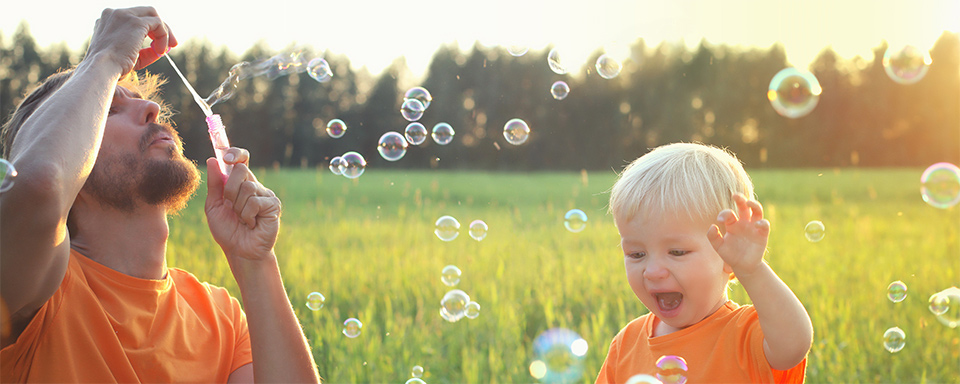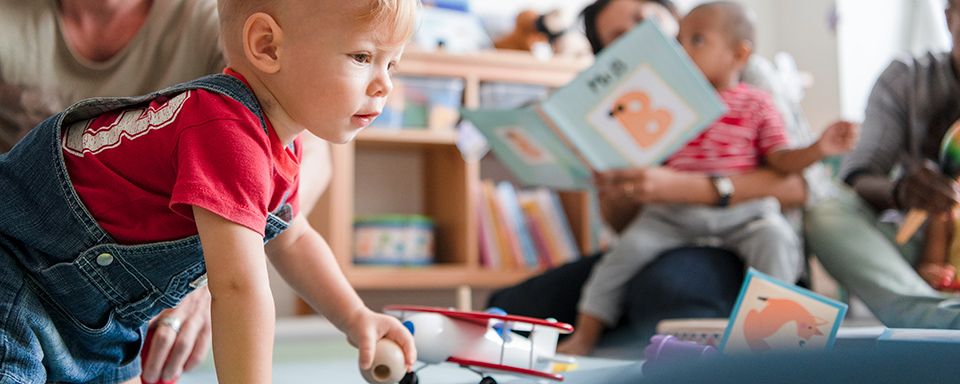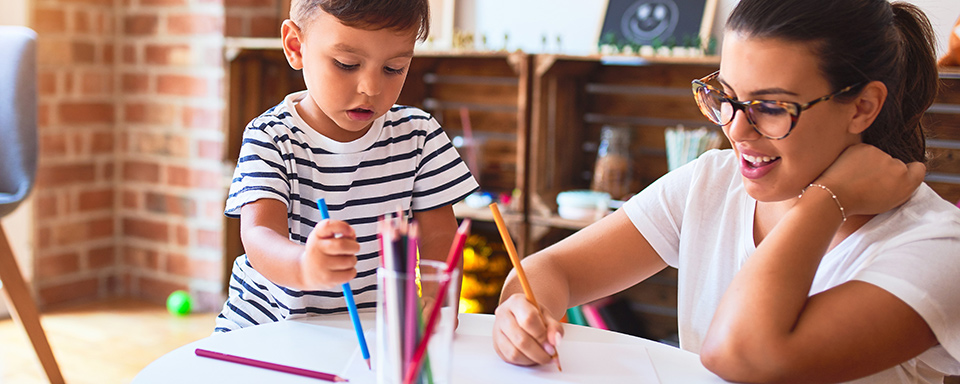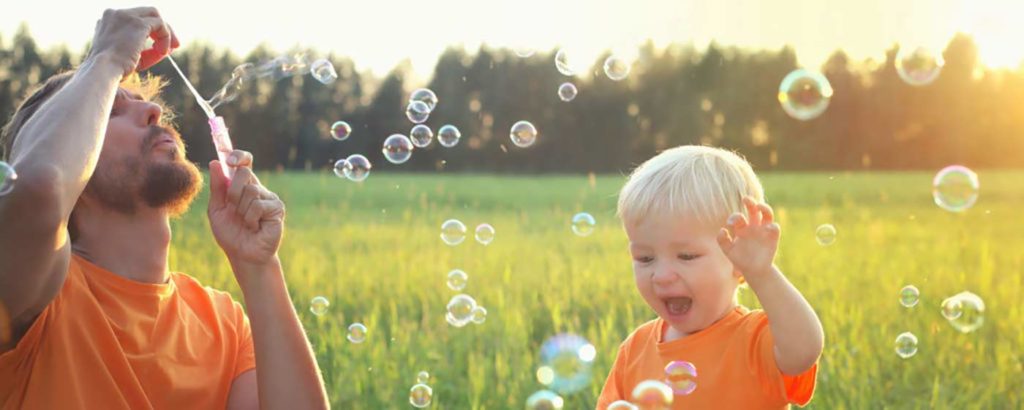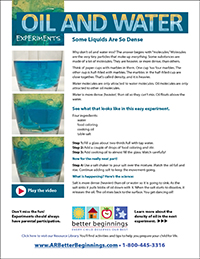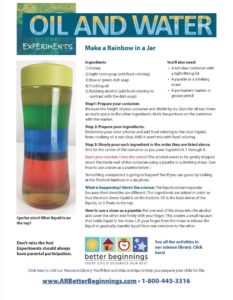Some Liquids Are So Dense
Why don’t oil and water mix? The answer begins with “molecules.” Molecules are the very tiny particles that make up everything. Some substances are made of a lot of molecules. They are heavier, or more dense, than others. Think of paper cups with marbles in them. One cup has four marbles. The other cup is half-filled with marbles. The marbles in the half-filled cup are close together. That’s called density, and it is heavier.
Water molecules are only attracted to water molecules. Oil molecules are only attracted to other oil molecules.
Water is more dense (heavier) than oil so they can’t mix. Oil floats above the water.
See what that looks like in this easy experiment.
Four ingredients:
water
food coloring
cooking oil
table salt
Step 1: Fill a glass about two-thirds full with tap water.
Step 2: Add a couple of drops of food coloring and stir.
Step 3: Add cooking oil to almost fill the glass. Watch carefully!
Now for the really neat part!
Step 4: Use a salt shaker to pour salt over the mixture. Watch the oil fall and rise. Continue adding salt to keep the movement going.
What is happening? Here’s the science:
Salt is more dense (heavier) than oil or water so it is going to sink. As the salt sinks it pulls blobs of oil down with it. When the salt starts to dissolve, it releases the oil. The oil rises back to the surface. You get dancing oil!
Learn more about the density of oil in the next experiment.
Make a Rainbow in a Jar
Ingredients
1) Honey
2) Light corn syrup (add food coloring)
3) Blue or green dish soap
4) Cooking oil
5) Rubbing alcohol (add food coloring to contrast with the dish soap)
You’ll also need:
A tall clear container with a tight-fitting lid
A pipette or a drinking straw
A permanent marker or grease pencil
Step1: Prepare your container.
Measure the height of your container and divide by six. Give the oil two times as much space as the other ingredients. Mark the portions on the container with the marker.
Step 2: Prepare your ingredients.
Determine your color scheme and add food coloring to the clear liquids. Note: cooking oil is not clear, AND it won’t mix with food coloring.
Step 3: Slowly pour each ingredient in the order they are listed above. Aim for the center of the container as you pour ingredients 1 through 4.
Don’t pour number 5 into the center! The alcohol needs to be gently dripped down the inside wall of the container using a pipette or a drinking straw. (See how to use a straw as a pipette below.)
Something unexpected is going to happen! See if you can guess by looking at the finished Rainbow in a Jar photo.
What is happening? Here’s the science: The liquids remain separate because their densities are different. The ingredients are added in order so that the most dense liquid is on the bottom. Oil is the least dense of the liquids, so it floats to the top.
How to use a straw as a pipette: Put one end of the straw into the alcohol and cover the other end firmly with your finger. This creates a small vacuum that holds liquid in the straw. Lift your finger from the straw to release the liquid to gradually transfer liquid from one container to the other.
See all the activities in our science library. Click here!
Don’t miss the fun! Experiments should always have parental participation.


